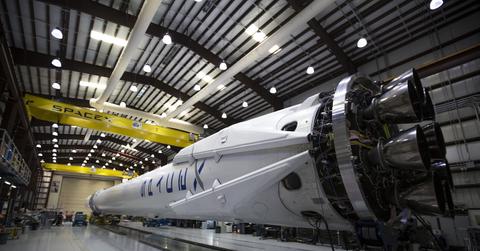Space Exploration Inspires IKEA's Future Line Of Miniature Furniture
IKEA will collaborate with NASA and a Swedish university to release tiny furniture in 2019. They're inspired by space travel and life on Mars to give them ideas to create the best products that will help out the increase in urban population.
Updated May 24 2019, 4:28 a.m. ET
Every year, IKEA announces collaborations and projects that they’re working on at the Democratic Design Day event at Almhult, Sweden. The most recent event featured their involvement with NASA and Sweden’s Lund University School of Industrial Design to get a better idea on how to implement tiny furniture in small living spaces. There’s a chance it could create familiar miniature homes on other planets.
IKEA will be working with scientists to study spaceships and the living situation inside of them. Astronauts have to deal with cramped conditions for long periods of time, such as Peggy Whitson who has spent nearly 600 days in space. Everything is set up to make them as comfortable as possible. This would make a great environment to emulate for tiny homes, with the luxury of being on the ground instead of flying around space.
Why is this important? Population in urban areas will only continue to grow, and places like Austin, Texas, are struggling with creating adequate living areas. Renting apartments is also becoming a pricey venture. Places throughout San Francisco can run around $3,500 per month for just a one-bedroom apartment.
Instead of opting for that, people are simply moving to other places in the Bay Area community or leaving altogether. One fix that would aid both these issues are implementing tiny homes that people can either buy outright or rent for much cheaper than at a standard apartment complex.
Not only could this downsizing open up possibilities on Earth, but that may provide an opportunity to establish a good living situation on another planet. IKEA will also be studying the habitat on Mars and how they’ll have to adapt to the many changes in the environment, such as gravity. A group of team members have been sent to Utah to work at the Mars Desert Research Station to learn about the planet hands-on.
Transferring smaller objects to Mars would be beneficial, as it’s estimated that every two pounds will cost about $2 million. There’s a chance some products from NASA could be produced through IKEA, but the only relationship they have now is through Lund University.
Michael Nikolic, the Creative Leader at IKEA, tells Dezeen that there’s a link between urban population growth and the challenges of living on Mars, saying, "When you design for life in a spacecraft or planetary surface habitat on Mars, you need to be creative yet precise, find ways to repurpose things and think carefully about sustainability aspects...With urbanisation and environmental challenges on earth, we need to do the same."
IKEA’s event is held in Almhult because it’s the site of where the company was founded back in 1943. The company has nearly 400 locations worldwide and employs over 183,000 people. Their goal is to release this space-saving furniture sometime in 2019.
